Chinese Vases: A Decorating Classic
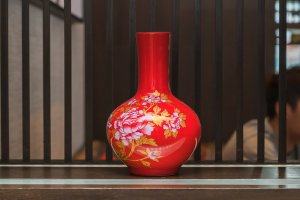
Big or small, multicolored on monochrome, Chinese vases can adapt to any color scheme, style, culture or time period.
In thousands of years, Chinese ceramics have never gone out of style, and are the perfect way to instantly bring any room to life.
These timeless vases are undoubtedly one of China’s most famous contributions to the world of interior decor. However, when we talk about Chinese vases, we’re not talking about some mere decorative item; these vases are true works of art. In fact, original Chinese vases can sell for millions of dollars.
The elegant design of Chinese vases makes them a timeless and versatile decorative element. Classical or traditional, modern or minimalist, they can easily be incorporated into any decor style, regardless of whether or not it has oriental influences.
The history of the Chinese vase
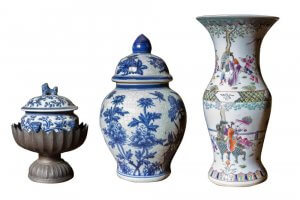
The subtle elegance and beauty of Chinese vases means they have been able to adapt to keep up with ever-changing trends. The art of Chinese ceramics is a tradition that dates back thousands of years. In fact, their story began more than 8000 years ago, in the Neolithic era.
The sophisticated methods used by the first potters were simply astonishing, producing famous works such as the terracotta army. Over the following centuries, they developed countless new technologies and styles. Here are just some of the most important.
Chinese vases: Tang Dynasty (618-907)
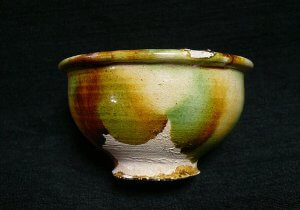
Some of the most famous Chinese vases are the tricolor ceramics of the Tang dynasty. Characterized by their wonderful combinations of yellows, greens and whites, these pieces are among the most sought-after by antiques collectors.
Tang dynasty ceramics are priceless. Fortunately, you can find many Tang dynasty-inspired vases on the market, which are significantly more affordable than the originals.
These pieces have only increased in value as time has gone on.
Song dynasty (960-1279)

During the Song dynasty, the rise in popularity of Chinese porcelains and ceramics was all but unstoppable. The many technological advances in the world of ceramics meant that new styles began to emerge.
These styles varied slightly from region to region. However, all Song dynasty vases are characterized by simple yet elegant enamelwork, and traditional shapes. Many of the patterns used to decorate Song dynasty vases were inspired by nature and everyday life.
Yuan and Ming vases: the age of blue and white porcelain (1279-1644)
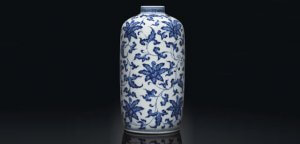
Yuan and Ming dynasty vases represent the golden age of Chinese ceramics and porcelains. The pieces made during this time period quickly became popular around the world, and were even reproduced in far-off countries such as France and the United Kingdom.
They continue to be admired by decorators today and, thanks to the large number of reproductions, and we can find many beautiful affordable pieces on the market.
Chinese vases immediately become the focal point of any room.
Ming and Qing dynasty vases (1644-1911)
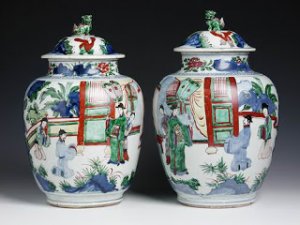
Throughout these dynasties, new techniques emerged and porcelain work evolved. Famille rose enamel was one of the most popular techniques, allowing potters to incorporate colors into their designs. The huge variety of colors available allowed them to create beautiful floral and pastoral scenes.
How to use Chinese vases
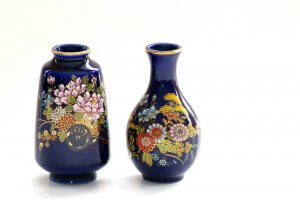
As we’ve already mentioned, Chinese vases are extremely valuable pieces. When it comes to using these vases in your home, there are certain things you need to consider if you really want make the most of them.
- Chinese vases are very delicate, so it’s important to make sure you place them somewhere safe, out of harm’s way. For example, you could place large vases in the corner of the room, where they will form the centerpiece of your decor. If, on the other hand, you have smaller vases, you could display them on a sideboard in your entrance hall.
- Chinese porcelain needs to be cleaned carefully. It is a very delicate material, so it’s best to avoid sudden changes in temperature. However, the safest way to clean your vases is to wipe them gently with a cold, damp cloth.
Big or small, multicolored on monochrome, Chinese vases can adapt to any color scheme, style, culture or time period.
In thousands of years, Chinese ceramics have never gone out of style, and are the perfect way to instantly bring any room to life.
These timeless vases are undoubtedly one of China’s most famous contributions to the world of interior decor. However, when we talk about Chinese vases, we’re not talking about some mere decorative item; these vases are true works of art. In fact, original Chinese vases can sell for millions of dollars.
The elegant design of Chinese vases makes them a timeless and versatile decorative element. Classical or traditional, modern or minimalist, they can easily be incorporated into any decor style, regardless of whether or not it has oriental influences.
The history of the Chinese vase

The subtle elegance and beauty of Chinese vases means they have been able to adapt to keep up with ever-changing trends. The art of Chinese ceramics is a tradition that dates back thousands of years. In fact, their story began more than 8000 years ago, in the Neolithic era.
The sophisticated methods used by the first potters were simply astonishing, producing famous works such as the terracotta army. Over the following centuries, they developed countless new technologies and styles. Here are just some of the most important.
Chinese vases: Tang Dynasty (618-907)

Some of the most famous Chinese vases are the tricolor ceramics of the Tang dynasty. Characterized by their wonderful combinations of yellows, greens and whites, these pieces are among the most sought-after by antiques collectors.
Tang dynasty ceramics are priceless. Fortunately, you can find many Tang dynasty-inspired vases on the market, which are significantly more affordable than the originals.
These pieces have only increased in value as time has gone on.
Song dynasty (960-1279)

During the Song dynasty, the rise in popularity of Chinese porcelains and ceramics was all but unstoppable. The many technological advances in the world of ceramics meant that new styles began to emerge.
These styles varied slightly from region to region. However, all Song dynasty vases are characterized by simple yet elegant enamelwork, and traditional shapes. Many of the patterns used to decorate Song dynasty vases were inspired by nature and everyday life.
Yuan and Ming vases: the age of blue and white porcelain (1279-1644)

Yuan and Ming dynasty vases represent the golden age of Chinese ceramics and porcelains. The pieces made during this time period quickly became popular around the world, and were even reproduced in far-off countries such as France and the United Kingdom.
They continue to be admired by decorators today and, thanks to the large number of reproductions, and we can find many beautiful affordable pieces on the market.
Chinese vases immediately become the focal point of any room.
Ming and Qing dynasty vases (1644-1911)

Throughout these dynasties, new techniques emerged and porcelain work evolved. Famille rose enamel was one of the most popular techniques, allowing potters to incorporate colors into their designs. The huge variety of colors available allowed them to create beautiful floral and pastoral scenes.
How to use Chinese vases

As we’ve already mentioned, Chinese vases are extremely valuable pieces. When it comes to using these vases in your home, there are certain things you need to consider if you really want make the most of them.
- Chinese vases are very delicate, so it’s important to make sure you place them somewhere safe, out of harm’s way. For example, you could place large vases in the corner of the room, where they will form the centerpiece of your decor. If, on the other hand, you have smaller vases, you could display them on a sideboard in your entrance hall.
- Chinese porcelain needs to be cleaned carefully. It is a very delicate material, so it’s best to avoid sudden changes in temperature. However, the safest way to clean your vases is to wipe them gently with a cold, damp cloth.
All cited sources were thoroughly reviewed by our team to ensure their quality, reliability, currency, and validity. The bibliography of this article was considered reliable and of academic or scientific accuracy.
- Vainker, J.: Cerámica china y porcelana: De la prehistoria al presente, Londres, The British Museum Press, 1991.







